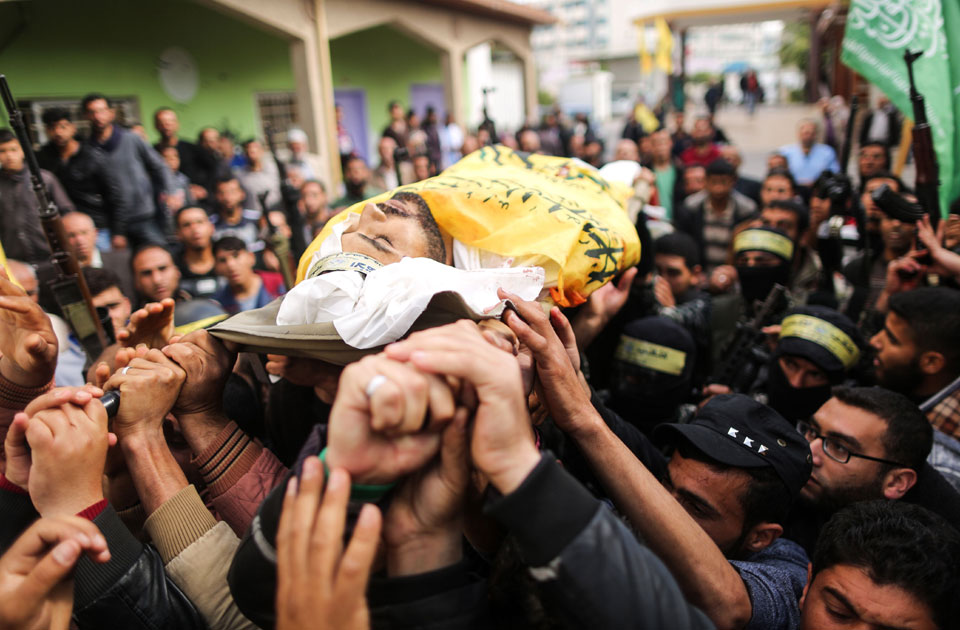
By Eleanor Beevor
The events of March 30th 1976, which is now known as Land Day, have endured in the Palestinian collective memory. But shocking violence against Palestinian protestors has erupted in Gaza during this year’s commemorative Land Day protests. And those protests began with much wider concerns than just keeping history alive. Land Day has come to symbolise Palestinian connectivity, a solidarity that spreads beyond borders. But as fresh protests are met with further casualties at the hands of Israeli forces, the meaning of Land Day may be altered again as it is forced to reckon with more deaths, and more anger.
Land Day commemorates the deaths of six Palestinian citizens of Israel, who died protesting the Israeli confiscation of Palestinian land in Galilee. Whilst most Palestinians were displaced during the 1948 war, about 160,000 managed to retain their homes in Israel, and they and their descendants make up this current minority. Whilst Galilee is within Israeli borders, the Israeli government at the time was concerned that the Galilean population had remained predominantly Arab. Thus in March 1976, Israel decided to expropriate some twenty thousand dunums of land in the region to expand Jewish settlement. Whilst Israel had engaged in a continuous policy of expropriating Palestinian-owned land since 1948, this particular incident proved to be a breaking point for the Palestinian population. That may have been partly because martial law had only been revoked nine years earlier. Either way, 1976 marked the first widespread act of collective civil disobedience by Palestinians in Israel.
In preparation for the expropriation, the Israeli army declared a curfew in several Arab towns and villages and outlawed protest. Despite this, marches were organised in Arab areas throughout Galilee and beyond. Tens of thousands of demonstrators turned out, including men, women and children. However, confrontations with the Israeli police and horrific violence followed. Six Palestinian protestors lay dead at the end of the day, and over a hundred were wounded.
Terrible though this violence was, Palestinians have experienced bloodier days. Yet Land Day is highly significant, because it marked the inclusion of Palestinians in Israel as participants in the Palestinian nationalist struggle. Israel refers to this minority as “Israeli Arabs” rather than “Palestinians”. And prior to Land Day, those same citizens had been largely forgotten by pro-Palestine activists, both within the Palestinian territories and around the world. But Land Day affirmed their declaration that they were inseparable from the broader Palestinian cause, and that they too were experiencing the loss of their homeland. It also marked a sharp increase in the Palestinian minority participating in Israeli politics, with land being one of their most urgent concerns.

Palestinian relatives mourn over the body of Hamdan Abu Amsha /AFP
Thus Land Day remains one of the most important events in the Palestinian calendar because of its significance in bolstering a united Palestinian identity. It is commemorated yearly by planting olive trees, and by organising demonstrations against Israeli occupation.
But the day now serves to mark ongoing struggles. The 2018 commemoration of Land Day was unsurprisingly bound up with Donald Trump’s declaration of Jerusalem as Israel’s capital, and his promised peace plan, which he refers to as the “deal of the century”. For Palestinians this deal is a disturbing prospect, since if rumours are to be believed, not only will the deal not include East Jerusalem as the capital of Palestine. It will also reportedly exclude Palestinian refugees’ right of return. As a result, this year’s Land Day protests in Gaza were to mark the beginning of “the Great March of Return”, a sit-in that would last for six weeks, until Nakba Day on May 15th.
Professor Laleh Khalili, an expert on Palestine at the School of Oriental and African Studies in London, told Al Bawaba:
“In some ways, the merging of Palestinian campaigns around return and Land Day commemorations weave together two issues. First, the fact that the creation of Palestinian refugees in their hundreds of thousands was as a direct result of the expropriation of their land that started with the creation of settlements in that region, accelerated in 1947, just before the Nakba and has continued unabated.
It also importantly brings together the refugees and Palestinian citizens of Israel, two categories of Palestinians separated by borders and differing treatments and varying access to rights, whose struggle is nevertheless conjoined in the Land Day and Right of Return campaigns.”
But this year’s Land Day protest has resulted in an even more painful tragedy. Since the Great March of Return began on March 30th, twenty-seven Palestinians in Gaza, including a journalist in a flak jacket marked “PRESS” have been killed by Israeli forces. Israeli Defence Force spokespeople have insisted that the protests are a provocation instigated entirely by Hamas, and have at times tried to claim that every death was a matter of deliberated targeting. All those who get within 300 yards of the border fence are considered “instigators” by current IDF rules of engagement and fired upon.
Israeli human rights advocates B’Tselem has called upon all IDF soldiers to refuse orders to fire upon civilians given that it contravenes international law. Yet so far, the situation shows little sign of abating. And if it continues, the memorialisation of Land Day may become one that recalls a blur of tragedies, rather than a victory for Palestinian unity.
Add a new comment